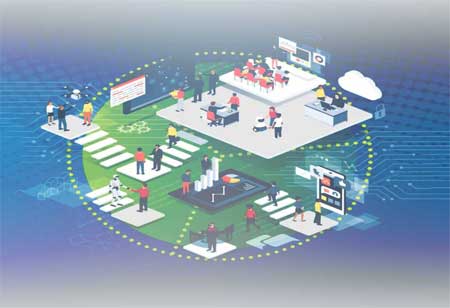THANK YOU FOR SUBSCRIBING
Evolution of AI Development and Tools
The trajectory of AI technologies' development and evolution has unfolded as a remarkable journey marked by perpetual innovation and seamless transitions.

By
Apac CIOOutlook | Thursday, August 24, 2023
Stay ahead of the industry with exclusive feature stories on the top companies, expert insights and the latest news delivered straight to your inbox. Subscribe today.
AI has transformed from a futuristic concept to a tangible reality, requiring tools and methodologies like machine learning libraries and sophisticated frameworks for model creation, training, and deployment.
FREMONT, CA: The trajectory of AI technologies' development and evolution has unfolded as a remarkable journey marked by perpetual innovation and seamless transitions. From its nascent stages as a subject of academic inquiry to its current status as an influential and omnipresent force, artificial intelligence has demonstrated remarkable advancement in both its foundational theories and tangible real-world implementations. The progression has been propelled by breakthroughs in algorithms, computational potency, and data availability, all of which have exerted a transformative impact on the course of AI evolution. As a result, a diverse array of tools has emerged, empowering developers to forge increasingly intricate AI systems. This evolutionary course has ushered in a novel epoch of ingenuity and puzzle-solving and has also brought about a paradigm shift across various industries and domains. Moreover, it has democratised the prowess of AI, rendering it accessible to a wider spectrum of skilled practitioners.
Evolution of AI Development Tools
Open Source Libraries: The emergence of open-source libraries like TensorFlow, PyTorch, and sci-kit-learn revolutionised AI development. These libraries provide pre-built functions for tasks like data preprocessing, model building, and evaluation, significantly reducing the development time. Moreover, they offer a community-driven ecosystem where researchers and developers can collaborate and contribute.
AutoML (Automated Machine Learning): As AI adoption grew, there was a need to democratize AI development beyond experts. AutoML platforms like Google AutoML, H2O.ai, and AutoKeras enable users with limited AI expertise to build models by automating tasks such as feature selection, hyperparameter tuning, and model architecture search.
AI Frameworks: To facilitate the development of complex AI systems, frameworks like OpenAI's Gym and Microsoft's Cognitive Toolkit were introduced. These frameworks provide an environment for developing and testing AI algorithms across a range of tasks, from game playing to natural language processing.
Cloud Services: Cloud providers like Amazon Web Services (AWS), Microsoft Azure, and Google Cloud offer AI services that allow developers to leverage AI capabilities without managing the underlying infrastructure. These services provide APIs for tasks like image recognition, language translation, and speech synthesis.
Neural Architecture Search (NAS): NAS tools automate the process of designing optimal neural network architectures. They explore a vast space of architectures to find configurations that deliver high performance, enabling the creation of more efficient and effective models.
The Role of AI Development Tools in Advancement
Accelerated Development: AI development tools have drastically reduced the time required to build, train, and deploy models. This has accelerated the pace of AI innovation across industries ranging from healthcare and finance to entertainment and manufacturing.
Accessibility: The democratisation of AI through tools like AutoML and cloud services has enabled individuals and small businesses to harness AI capabilities without extensive expertise, fostering a more inclusive AI landscape.
Innovation: AI development tools have enabled researchers to focus on innovation rather than reinventing the wheel. By providing pre-built components and infrastructure, these tools encourage the development of novel algorithms and applications.
Interdisciplinary Collaboration: The user-friendly nature of modern AI tools has encouraged collaboration between AI experts and professionals from diverse fields. This interdisciplinary approach has led to the development of AI solutions that address complex real-world challenges.
AI development tools have come a long way since the inception of AI. From manually coded rules to sophisticated neural architecture search, these tools have played a pivotal role in shaping the AI landscape. As AI continues to permeate various industries, the evolution of development tools will remain crucial in realising the full potential of artificial intelligence.





